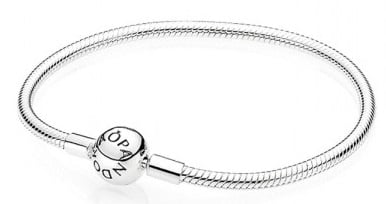

The company was able to reach its current 71 percent recycled content rate by obtaining that content on its own, melting the metals and then crafting the jewelry themselves. Pandora is a member of the Responsible Jewelry Council, which sets sustainability standards for the industry on matters ranging from labor to toxics to emissions, and Twomey-Madsen said the company plans to engage with the council on certification as it works toward its latest goal.

Global Compact Leaders’ Summit, according to trade magazine Jewelry Outlook. "Every aspect of the supply chain needs to be connected to create a more sustainable future," said Iris Van der Veken, executive director of the Responsible Jewelry Council, during a session at the U.N. So, how will the company close the 29 percent gap between the amount of recycled silver and gold is uses now and what it hopes to use five years from now? It plans to engage with key stakeholders in its supply chain, which will be vital. Namely, it takes a third of the CO2 to extract the same silver from consumer electronics, when compared to mining silver, according to Pandora. Recycling metals uses fewer resources than mining new metals. The company anticipates that when it reaches this goal, it will reduce its CO2 emissions, water usage and other environmental impacts. He noted that shifting from partially virgin metals to 100 percent recycled metals will make a big difference in Pandora’s carbon footprint. The company is developing new store concepts to shift the lighting installations and also adjusting its procurement policies for electricity in its network so that its stores are more energy efficient, and that it is sourced from renewable sources sourced wherever possible, according to Twomey-Madsen. For example, as the world reopens after shutdowns related to the COVID-19 pandemic, the company plans to reduce the energy it uses in its retail stores as it related to lighting and heating. To further move toward its larger goal of reaching carbon neutrality, Twomey-Madsen said Pandora is thinking about how the company might reduce its footprint in other parts of the business. "With that, we then, of course, sit down and look at what are the main levers that we can pull to reach carbon neutrality and to reduce the footprint of the value chain connected with crafting our jewelry, delivering our jewelry, and then this comes in as one of those components," said Mads Twomey-Madsen, head of sustainability at Pandora. Pandora’s 100 percent recycled silver and gold commitment comes after the disclosure in January of its aspirational pledge to become carbon neutral in the company’s own operations by 2025.

The jewelry company also uses gold at a smaller volume. Pandora said it uses palladium, copper and man-made stones, such as nano-crystals and cubic zirconia, in its products but the volume of those materials is small compared to its use of silver, which accounts for over half of all purchased product materials measured by weight. And the company sells a lot of jewelry: Fast Company noted that last year, it sold 96 million pieces of jewelry, or roughly 750,000 pounds of silver, more than any other company in the industry. At least that’s the goal the Danish company set at the beginning of June.Īs it stands, 71 percent of the silver and gold in Pandora jewelry comes from recycled sources. By 2025, Pandora, the world’s largest jewelry brand by volume, will use 100 percent recycled silver and gold in its products.


 0 kommentar(er)
0 kommentar(er)
